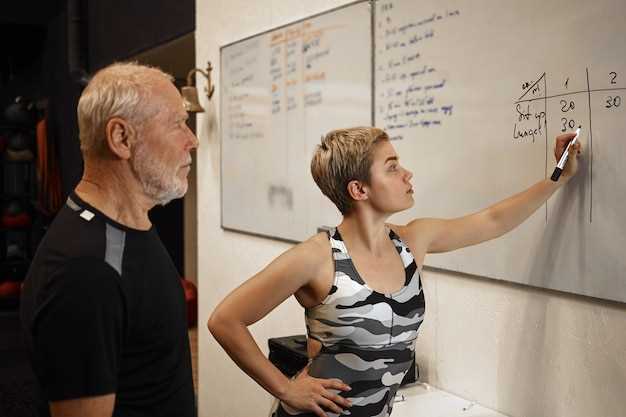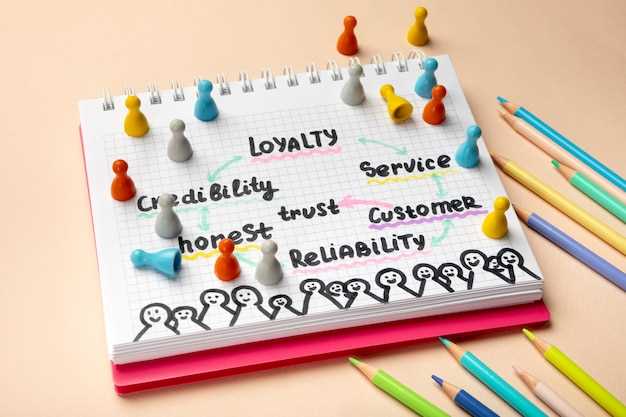Schedule a 30-minute structured meeting within 48 hours: require each participant to come prepared with exactly three factual points and one desired outcome, assign a neutral facilitator, limit speaking turns to two minutes, and record a single agreement with a named owner and deadline. Knowing roles and deadlines reduces ambiguity and prevents escalation in the workplace.
Adopt ten discrete actions with measurable targets: set a 2-week review cadence, measure progress weekly against three indicators (repeat incidents, time to agreement, adherence to action owners), and run formal reviews at 30 and 90 days. Pair each participant with a support person for check-ins, require written confirmation of any commitments, and insist that any new proposals include how they promote collaboration. These controls will definitely lower recurrence and increase accountability.
When disagreements arise, map multiple root causes (role overlap, workload, incentive mismatch, personalities), ask each side what outcome they will accept, clarify the message that will be communicated to the team, and coach managers to think in terms of system fixes rather than blame. Shift attitudes to become solution-focused by using neutral language, documenting options, and scheduling further evaluations. Provide escalation paths, mediation resources, and explicit timelines so follow-up is predictable and measurable.
10 Steps to Conflict Resolution – Practical Guide: Design Collaborative Spaces
Assign modular zones with quantities: 1 quiet booth per 5 people, 1 collaboration table (120×240 cm) per 8 members, and a public presentation area sized for 25% of usual meeting attendance; this layout reduces confusion and helps teams become calm within 3–7 minutes of entering the room.
Specify acoustic targets: quiet booths at 35–40 dB, group tables allowed up to 55 dB, and public forum up to 65 dB; use soft surfaces and 60 mm ceiling baffles to hit these numbers and promote clear speech without raising stress.
Mandate communication rules: share an agenda exactly 24 hours early, designate someone as timekeeper and facilitator, limit individual speaking turns to 2 minutes, and require that each person summarize the previous speaker’s thoughts before adding new ones.
Provide tangible resources: one 65″ screen per 12 people, 2 USB-C chargers per seat, paper sticky pads, and a networked collaborative whiteboard; digital sign-in should mark who used which resource and log meeting outcomes for follow-up.
Institute quick de-escalation activities: a 10-minute breathing and posture exercise after any heated exchange, a 5-step pause protocol (stop, breathe, ask, reframe, continue), and a neutral “time-out” room available within 10 minutes when someone needs space to calm down.
Track measurable goals: run a quarterly survey to improve psychological safety scores by at least 15% over six months, record incidence of raised voices per meeting, and log resolution times to make future design changes possible and data-driven.
Create visual cues to promote role clarity: color-code zones (blue = quiet, green = collaboration, yellow = activities), post a 3-item etiquette card at every table, and display a public scoreboard of meeting norms adherence to encourage good behavior.
Adopt facilitation templates: start meetings with a 90-second facts-only brief, use a 5-minute “perspective map” when disagreements appear, and require confirmation of agreed actions in a shared document so these decisions are traceable.
Train members with short drills: four 60-minute workshops per year–active listening, structured feedback, mediation techniques, and scenario practice–to reduce misinterpretation of thoughts and lower stress during tense moments.
Plan for scalability: when occupancy doubles, add one soft-seating cluster per additional 10 people, one extra quiet booth per 15, and a floating mediator role; these measures make it possible to maintain peace and keep productivity great as teams grow.
Step 1: Diagnose the Conflict Source
Conduct a 15-minute private interview with each participant, recording exact timestamps, relevant emails and task-log entries; rate each item 1–5 across four cause categories (process, role, resource, values) to separate facts from confusion and emotions and to flag what has been claimed versus what can be verified.
Appoint a neutral facilitator; in small business teams or family groups use an external third-party when power differential exceeds two reporting levels because internal leaders can enforce positions unintentionally. The facilitator should gather witness lists, require a signed confidentiality acknowledgment, and limit questions to observable actions to reduce bias, fostering impartial intake.
Classify root causes into three buckets: systemic (process/tool), role clarity (who owns what on projects) and interpersonal (communication style, unmet expectations). For each bucket document three concrete fixes with a named owner, a deadline and acceptance in writing; owners confirm their commitment and they follow a 5-day check-in cadence. If a single report lacks corroboration, it shouldnt trigger corrective measures without at least two independent data points, and include analysis of impact on collaboration.
Track outcomes: measure recurrence rate weekly for eight weeks and run a 5-question pulse to assess perceived fairness and ability to achieve team objectives; set targets (improve perceived fairness by 25%, cut repeat incidents by 50% in three months). Implement 45-minute decision-rule trainings to help managers apply standards and prevent them, publish a one-page checklist and a short value statement so teams can follow new norms and improve performance.
What facts and incidents to document first
Record date, time and precise location immediately; list everyone involved and state each person’s role and the source of the report (email, digital log, witness).
Write a concise, one- to two-sentence summary that clearly describes what happened, who spoke or remained calm, observable attitudes and just the objective behaviours with no interpretation.
List chronological points the record involves: exact timestamps, actions, who took the next turn, and any steps already executed; in addition, note measures aimed at fostering repair and helping those affected.
Log requests and commitments: record who is asking for follow-up, who will finish assigned tasks, designated leaders, the main objectives, and any personal impact or changes to morale that might affect subsequent decisions.
Preserve digital evidence intact: export email threads with headers and metadata, save screenshots, and keep a single rowse of referenced messages; record file names, storage path and access history to maintain a clear chain of custody.
| Поле | What to capture | Пример |
|---|---|---|
| Дата и время | Exact timestamp, timezone, duration | 2025-09-30 14:12 UTC, 7 minutes |
| People involved | Full names, roles, contact, who witnessed | J. Smith (manager), L. Gomez (staff), 2 witnesses |
| Source & Evidence | Origin of claim (email, chat, meeting note, digital log), file name, storage location | Email thread: subj. “Project delay” – saved as /evidence/eml/123.eml |
| Резюме | Concise factual description (1–2 lines) stating who did what and when | “At 09:05 A removed access to repo; B asked why; A declined to speak further.” |
| Observed behaviour | Actions, language used, tone, visible emotions, calm vs agitated | “Raised voice twice, remained calm after mediation, neutral tone by leader” |
| Immediate actions | Who intervened, steps taken, who will finish tasks, who is asking for follow-up | “IT restored access; A to finish checklist by Friday; B requested written apology” |
| Воздействие | Work effects, personal notes, absenteeism, morale indicators | “Two missed deadlines, increased sick days, team morale dip noted in weekly survey” |
| Next records | Assigned leaders, deadlines, next review date, who should speak at review | “Leader: L. Gomez; review 2025-10-07; J. Smith to speak for operations” |
How to distinguish positions from underlying needs
Require each participant to give a 90-second position statement, then spend 4 minutes probing needs with two fixed questions: “What outcome are you asking for?” and “What need will that outcome meet?” Use a neutral facilitator and a visible timer so everyone knows how much time is taken.
Use this concise script during workshops: 1) position (one sentence), 2) feeling (one phrase), 3) need (one sentence), 4) concrete preference or proposal. Mark each turn with bullet points on a shared board so points are transparent and easy to review.
Look for signal phrases that reveal needs: “I feel… because…”, “I need…”, “It’s about…”. If someone answers with blame or demands, restate their position neutrally and ask whether the demand is about safety, recognition, control, or predictability – most workplace complaints involve one of those four categories.
When mapping positions to needs, use a two-column note: left = exact wording of the position; right = inferred need plus evidence (specific examples and emotions). Example: “Stop assigning extra shifts” → need: workload fairness, predictability; evidence: five extra shifts in two weeks, increased stress. This format helps the company and personalities see what is being asked and why.
Test your inference by asking a single closed check: “Will resolving X meet that need?” If yes, propose a concrete experiment (dates, responsibilities, measurement). If not, ask whether the need is non-negotiable or if alternatives could help – list at least three options and rank them by feasibility.
Handle emotions explicitly: allow 60–90 seconds for expression, then label the emotion aloud (“I hear frustration about scheduling”) and move back to needs. Doing this prevents escalation and creates a positive space for collaboration rather than a list of complaints.
Allocate roles: facilitator keeps time and reframes; note-taker records positions and needs; each party confirms the note. In company practice, plan for 30–45 minutes per issue; some issues will be resolved in one session, others will need follow-up. Track whether agreed experiments were taken and what data will be reviewed.
Use neutral language and avoid interrogating personalities. Focus on observable facts (“dates, counts, emails”) and concrete behaviors rather than judgments. This will help teams separate what people are doing from what they actually need and will make future conversations more concise and handled with less friction.
In wrap-up, list 3 measurable next steps, assign owners, and set a 2-week review. Workshops that include short, focused practice rounds definitely increase the chance that positions are translated into real needs and workable solutions.
Who are direct and indirect stakeholders to map
Begin by listing direct stakeholders first: name roles, approximate counts and the primary source of their influence so you can prioritize meetings and workshops quickly.
- Direct stakeholders
- Immediate team (3–8 people): those doing the work – involve them in daily standups, listening sessions and short workshops.
- Direct manager (1): decision authority, schedule a 30–60 minute meeting to capture expectations and what’s needed.
- Project owner / sponsor (1): provides budget and scope; theyre the escalation point for any dispute about scope or priority.
- End users/customers (10–100+): collect problem statements, usage data and solutions ideas via surveys and targeted discussion groups.
- Vendors/suppliers (1–5): source of external constraints; document contractual limits and who can change them.
- Indirect stakeholders
- HR: policy and people risk – involve when personnel, behavior or social issues tend to surface.
- Legal/compliance: review when regulatory exposure could come from decisions made without review.
- Finance: impacts on cost and forecasting; theyre often missed until budgets are affected.
- Other departments (ops, sales, support): boundaries overlap and may create downstream disputes.
- Community or external partners: social reputation and external requirements that affect timelines.
Use these steps to map and score stakeholders objectively:
- Create a table: Name | Role | Interest (1–5) | Influence (1–5) | Source (budget, policy, expertise) | Contact method.
- Score interest vs influence and mark those with high influence & low interest for proactive engagement.
- Schedule meetings: 30–60 minutes for managers/sponsors, 45–90 minutes workshops for groups that need joint problem solving.
- Run 2 short workshops for cross-functional alignment and to surface hidden stakeholders who arent visible in org charts.
- Document all dispute records and proposed solutions; assign an owner and mark actions done once evidence is logged.
Practical tips:
- Best practice: limit attendee list per discussion to those directly involved plus one observer to keep meetings efficient.
- Focus on listening first; use asking prompts: “What problem did this create?”, “Who else should we talk to?”
- Dont assume only vocal people matter – quiet stakeholders tend to hold informal power or be a future source of conflicts.
- Share meeting notes within 24 hours and list what data is needed next so follow-ups come with clear asks.
- If youre ever unsure how to prioritize, map potential impact to revenue or safety and escalate to the manager with highest influence.
- Capture social channels and informal networks as potential indirect stakeholders; their feedback can surface root causes not in formal reports.
Which immediate risks require stabilization
Prioritize and stabilize threats to life first: uncontrolled arterial bleeding (apply direct pressure, use a tourniquet within 3 minutes for severe limb hemorrhage), airway compromise (chin lift/jaw thrust, suction, clear obstructions), respiratory failure (assist ventilation with pocket mask or bag‑valve if respirations <8>30/min), suspected spinal injury (immobilize inline and avoid moving the head), active seizure (protect from impact, do not restrain), and loss of consciousness (place in recovery position if airway is patent).
In cases of active violence or weapon presence, evacuate non‑involved people to a safe perimeter, notify emergency services immediately, document visible injuries, and avoid re‑engagement until trained responders arrive; do not attempt to disarm unless you are qualified.
Acute mental‑health risks that require immediate stabilization: imminent suicidal intent with plan and means (remove access to means, do not leave the person alone, arrange emergency psychiatric assessment), acute psychosis with danger to self/others (short verbal de‑escalation, safe distance, one calm responder), and severe panic or dissociation (grounding techniques, short breathing exercises, continual observation until professional help).
Environmental hazards demanding stabilization: active fire, gas leaks, structural collapse, hazardous chemical exposure–evacuate area, ventilate if safe, call specialized emergency services, and treat contamination with standard decontamination protocols.
Operational actions to stabilize a scene: assign a single coordinator to triage and communicate with responders; establish a short command list (medical, safety perimeter, documentation, liaison); spend resources on stopping ongoing harm rather than lengthy fact‑finding; reassess every 5–10 minutes and escalate if vitals or behavior do not improve.
You shouldnt ignore secondary risks because unattended minor injuries, mobile phones with photographing bystanders, or social media posts by bloggers and rowse can escalate tension; create a secure private space without cameras for those involved, which most people will find appreciated, whether they openly say so or not; help them feel heard to preserve opportunities to truly address the issue and identify an appropriate source of further assistance.
Use available resources: local emergency medical services, police for imminent violence, crisis lines for suicidal or psychotic episodes, and designated organizational contacts; have a short checklist to think through who is doing medical care, who is documenting, and who is contacting another authority so activities do not overlap and staff can better grow confidence handling similar events.
Address personal belongings and documentation early: secure evidence, photograph injuries with consent, record witness names and statements, and establish open communication to preserve positivity and safety while arranging further assessment; sometimes moving a single person to a quieter room reduces escalation more than intervening physically.
Source: WHO – Psychological First Aid: Guide for Field Workers


 10 шагов к разрешению конфликтов | Практическое руководство">
10 шагов к разрешению конфликтов | Практическое руководство">



 Commitment Phobia – The Root Causes and the Way Out">
Commitment Phobia – The Root Causes and the Way Out">
 How to Be a Good Listener – Practical Tips & Signs You’re Doing It Right">
How to Be a Good Listener – Practical Tips & Signs You’re Doing It Right">
 Противоположности притягиваются, схожести связывают – ключи к крепким отношениям">
Противоположности притягиваются, схожести связывают – ключи к крепким отношениям">
 Как увеличить физическую близость — прелюдия — это все | 10 практических советов">
Как увеличить физическую близость — прелюдия — это все | 10 практических советов">
 Развенчание 3 мифов о деньгах в браке | Реальные финансовые истины">
Развенчание 3 мифов о деньгах в браке | Реальные финансовые истины">
 Какие пары лучше всего общаются о сексе — ключевые черты и советы">
Какие пары лучше всего общаются о сексе — ключевые черты и советы">
 6 проверенных стратегий, чтобы углубить вашу эмоциональную связь с партнером">
6 проверенных стратегий, чтобы углубить вашу эмоциональную связь с партнером">
 Обзор — Разочарование в идеологии в сезон выборов">
Обзор — Разочарование в идеологии в сезон выборов">
 SomaliNet Forums – Somali Community Discussions & Support">
SomaliNet Forums – Somali Community Discussions & Support">
 15 Общих Проблем в Отношениях – Причины и Решения">
15 Общих Проблем в Отношениях – Причины и Решения">